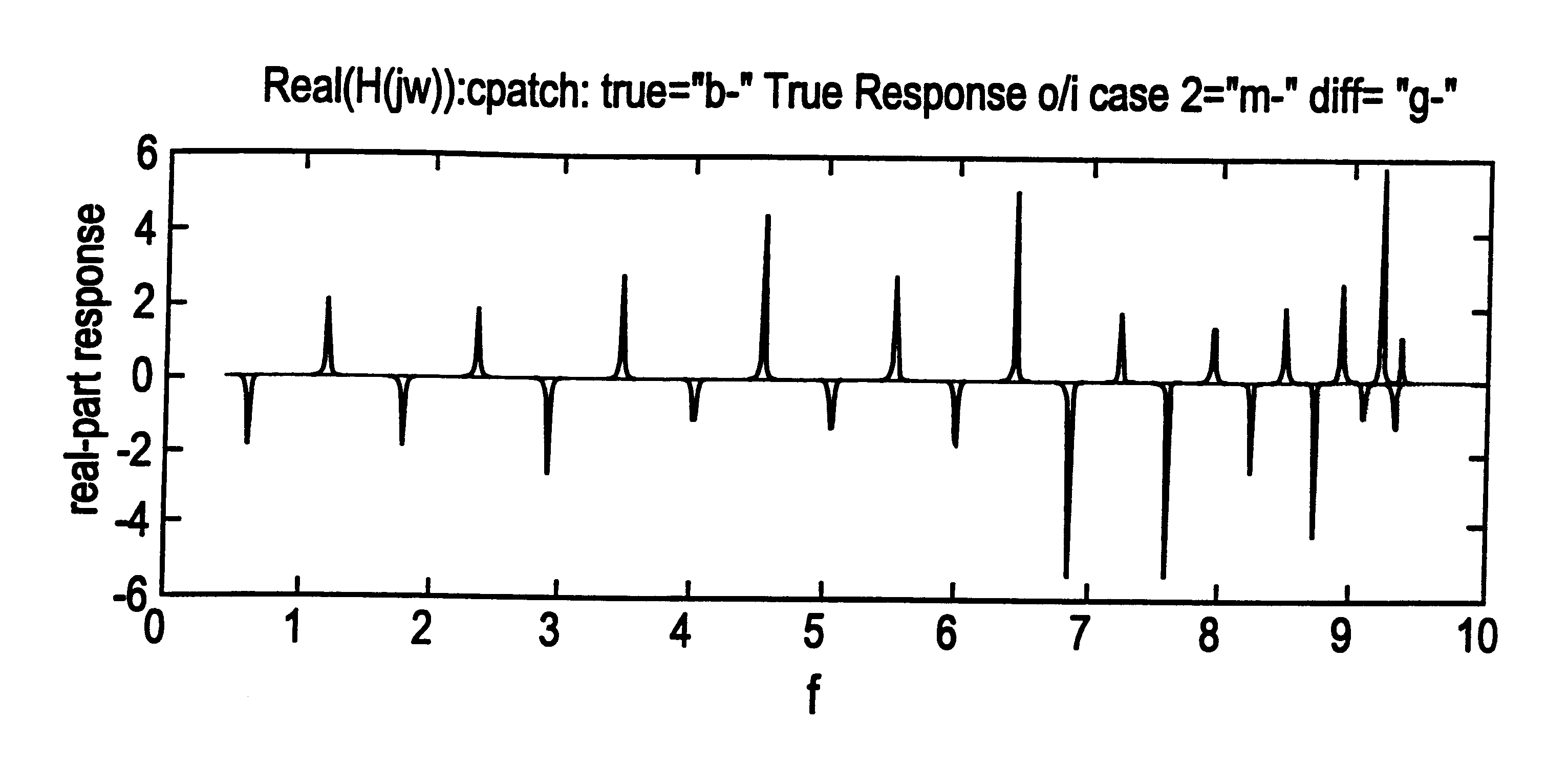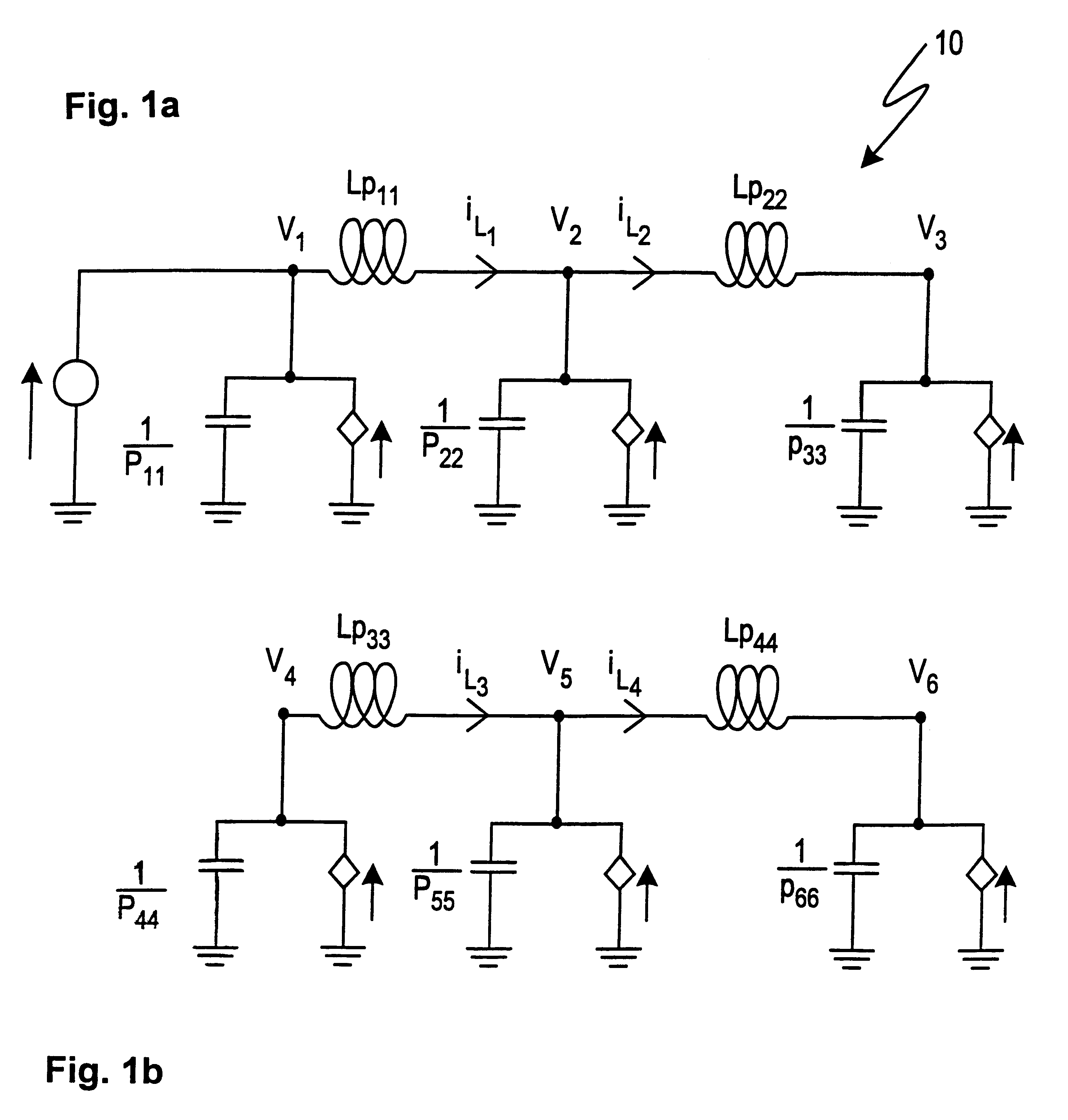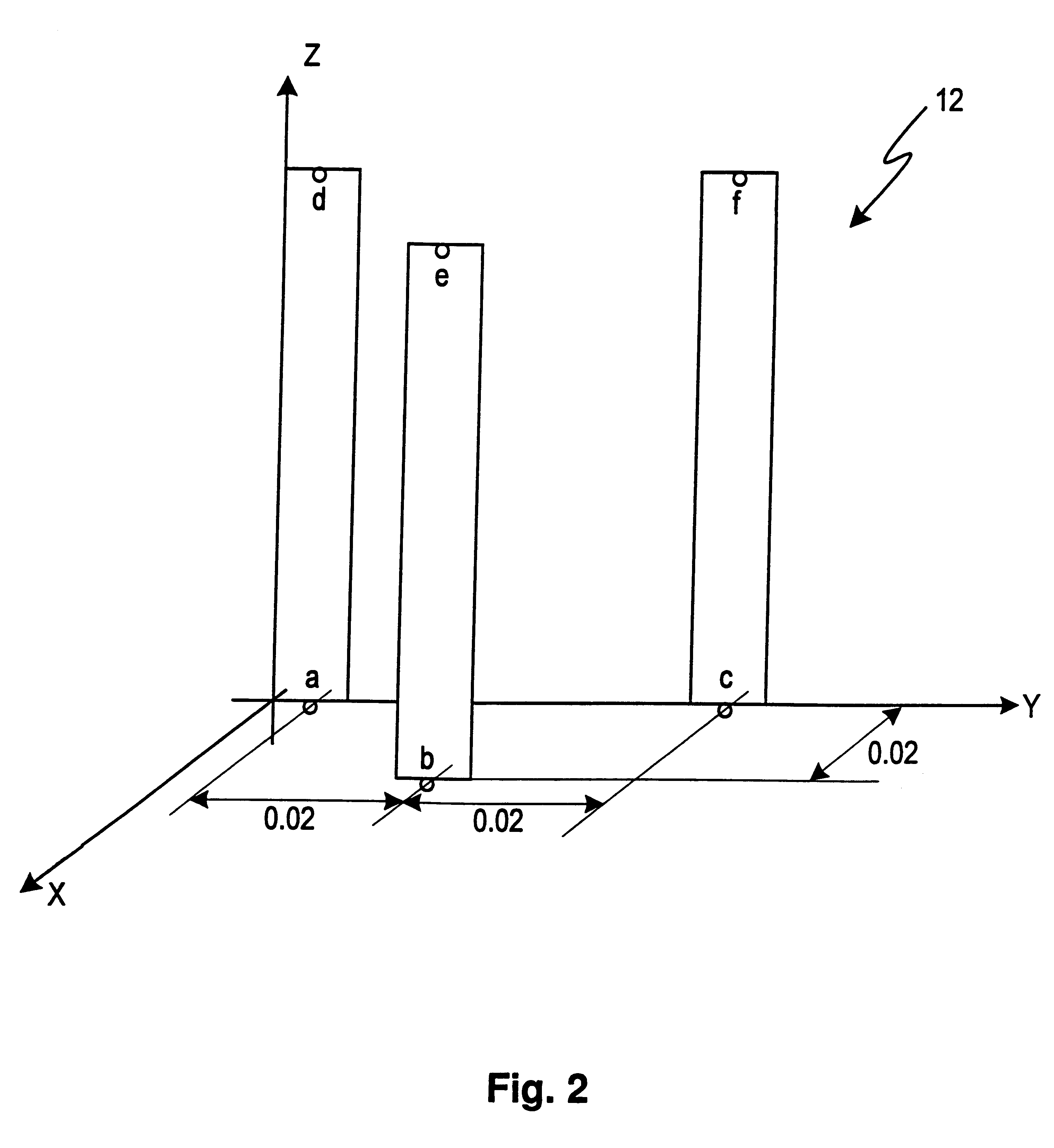Method for constructing reduced-order models of systems
a system and model technology, applied in the field of system model construction, can solve the problems of insufficiently addressing prior art, unable to articulate a systematic method for generating reduced-order models of vlsi interconnects, and exacerbate the possibility of signal delay and distortion
- Summary
- Abstract
- Description
- Claims
- Application Information
AI Technical Summary
Problems solved by technology
Method used
Image
Examples
Embodiment Construction
proceeds as follows. In section 1 we set forth the notation. In section 2 we review briefly PEEC formulations and give a schematic diagram and corresponding relationships for a simple PEEC example. In section 6 we use a larger version of this model to illustrate the proposed method. To motivate the invention, in section 3 we consider systems described by ordinary differential equations with no time delays.
In section 4 we extend the discussion in section 3 to problems describable by linear time invariant systems of delay-differential equations. In section 5 we define a reduced-order modeling procedure for linear, time-invariant systems of delay-differential equations. The power of this approach is demonstrated in section 6 where we apply this procedure to Example 1 in FIG. 2, numeral 12. We use the following notation and definitions.
1 Notation
A=(a.sub.ij), 1.ltoreq.i,j.ltoreq.n, n.times.n matrix
A(s)=n.times.n matrix which is a function of parameter s
det(A(s)), determinant of A(s), s,...
PUM
 Login to View More
Login to View More Abstract
Description
Claims
Application Information
 Login to View More
Login to View More - R&D
- Intellectual Property
- Life Sciences
- Materials
- Tech Scout
- Unparalleled Data Quality
- Higher Quality Content
- 60% Fewer Hallucinations
Browse by: Latest US Patents, China's latest patents, Technical Efficacy Thesaurus, Application Domain, Technology Topic, Popular Technical Reports.
© 2025 PatSnap. All rights reserved.Legal|Privacy policy|Modern Slavery Act Transparency Statement|Sitemap|About US| Contact US: help@patsnap.com



